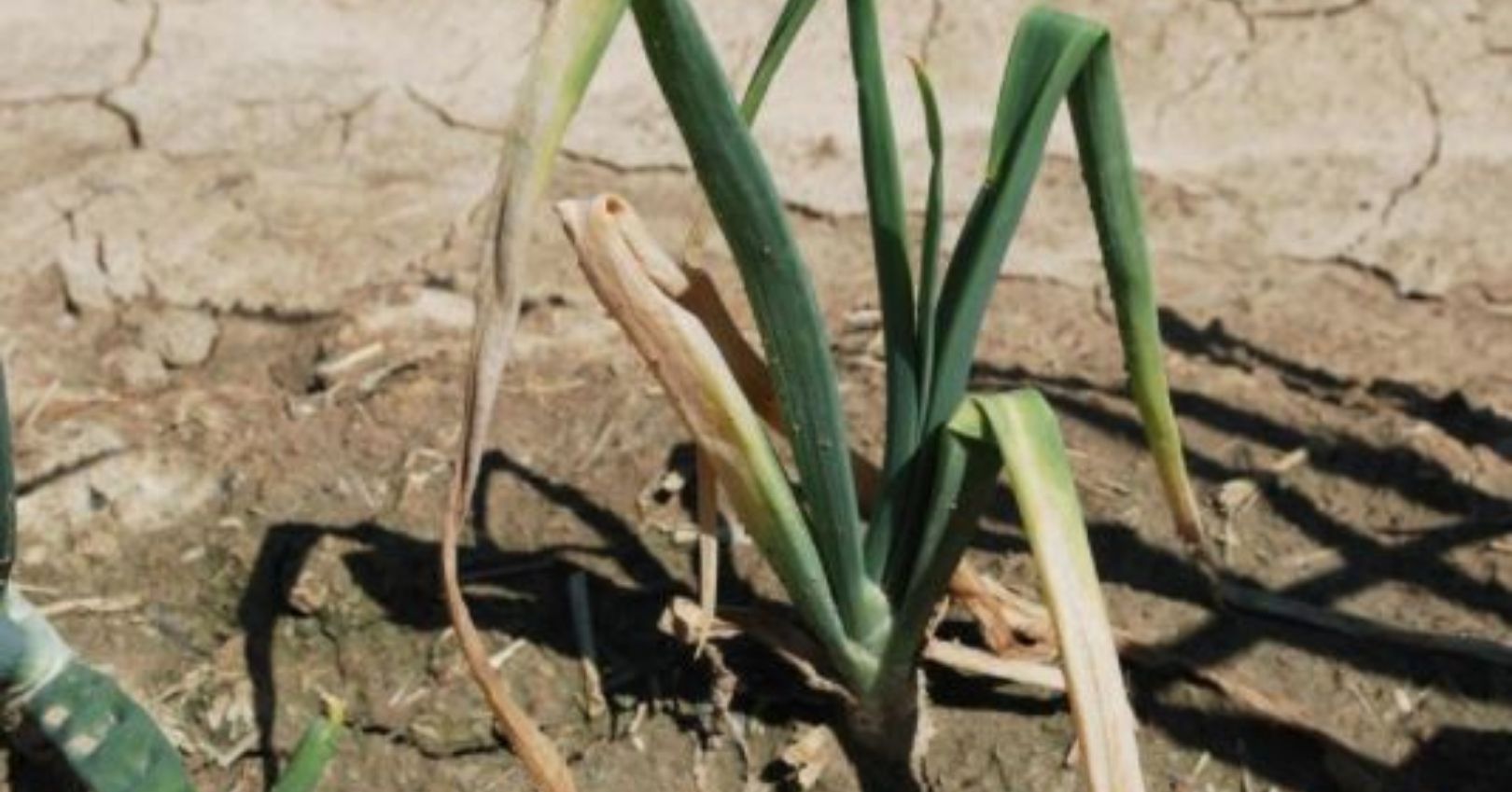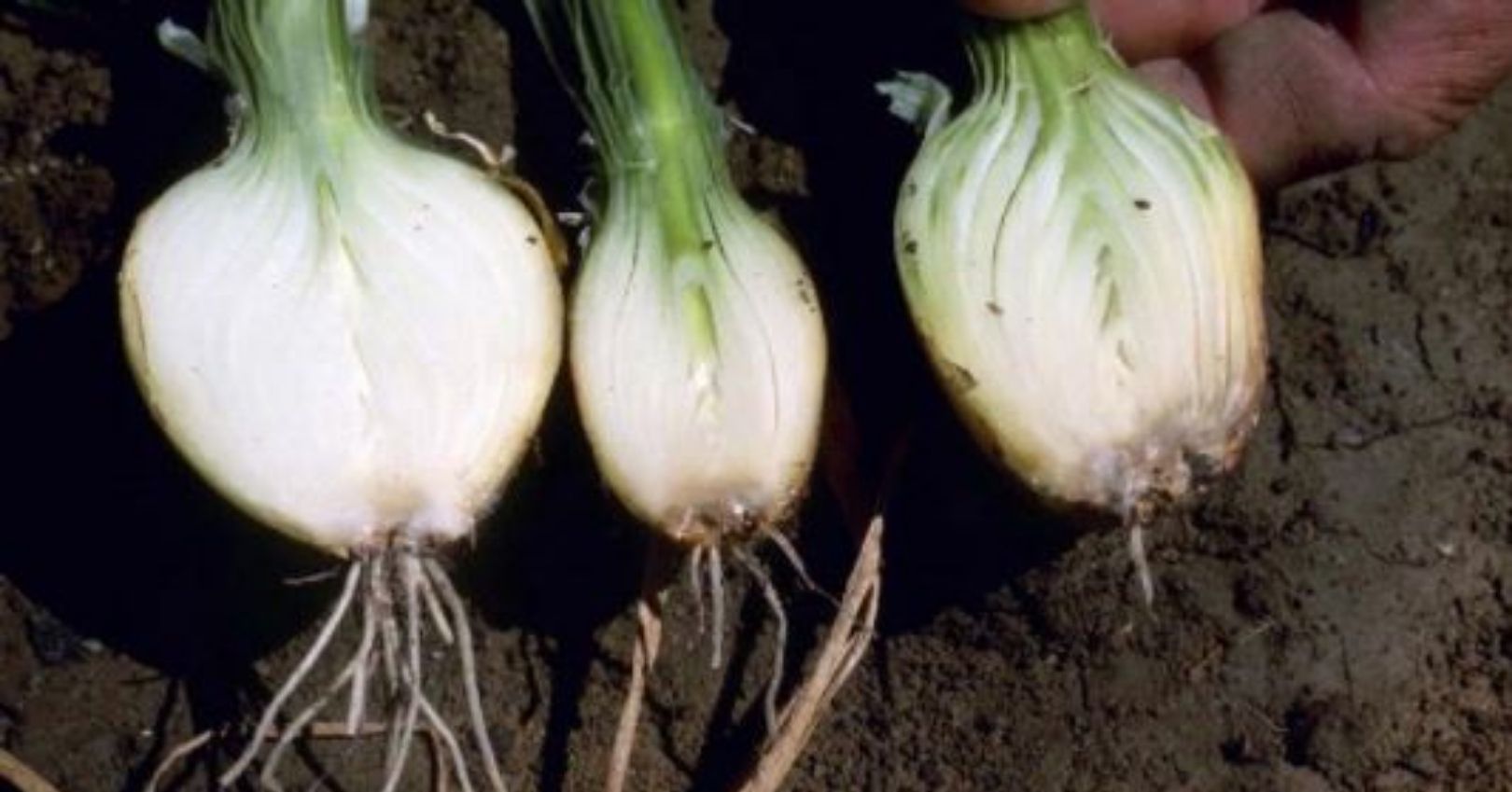Fusarium Basal Rot


Casual Agent
Fusarium Basal Rot is caused by the fungus Fusarium oxysporum f. sp. cepae. It is a soilborne disease that is present worldwide. The disease affects all allium species but is most damaging in onion and garlic production.
Symptoms
The fungus infects onions and garlic at any growth stage through the wounds and scars at the base of the bulb. Initial symptoms include leaf curling, yellowing, and dieback. Red-brown discoloration and rot forms along the root-basal plate margin. When cut open, the bulb tissue will appear brown. Symptoms may not be visible in the field, as they tend to develop during storage.
Disease Cycle
F. oxysporum f. sp. cepae overwinters in the soil as chlamydospores (thick-walled survival spores) within the soil. When temperatures reach 77-84°F, chlamydospores germinate and invade onions through existing tissue wounds. Rotational crops (corn, tomato, sunflower, oats, and sudangrass) support fungal growth but are asymptomatic.
Management
- Plant resistant cultivars.
- Implement crop rotation. Rotate out of onion, garlic, and leeks for 3-4 years.
- Avoid planting in fields with a history of Fusarium basal rot problems.
- Store onion bulbs at 39°F and relatively low humidity (70%) to prevent losses if possible.

